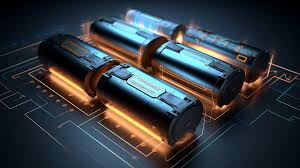
Battery Breakthroughs That Will Power the Future
From smartphones and electric cars to renewable energy and space tech, batteries are the silent engines behind modern life. But the batteries we rely on—mainly lithium-ion—are reaching their limits. They degrade over time, charge slowly, and can be dangerous under stress.
Enter the next generation of battery breakthroughs—smaller, faster, safer, and infinitely more powerful. These innovations could transform how we live, travel, and power the planet.
Let’s explore the cutting-edge battery technologies that could redefine the future.
🔋 Why Batteries Matter More Than Ever
As the world shifts away from fossil fuels, batteries are no longer just a tech convenience—they’re a climate solution. The better our batteries, the faster we can:
-
Electrify transportation
-
Store solar and wind energy
-
Reduce our carbon footprint
But with demand rising and lithium resources stretched, innovation is the only way forward.
⚡ 1. Solid-State Batteries: The EV Game Changer
Traditional lithium-ion batteries use liquid electrolytes, which can leak, overheat, or catch fire. Solid-state batteries replace that liquid with solid materials, making them:
-
Safer
-
More energy-dense
-
Faster to charge
-
Longer-lasting
Companies like Toyota, QuantumScape, and Samsung are racing to bring solid-state batteries to electric vehicles, promising 600-mile ranges and 10-minute charge times.
🌿 2. Sodium-Ion Batteries: Abundant and Affordable
Lithium is rare and expensive to extract. Sodium, on the other hand, is cheap and abundantly available in seawater.
Sodium-ion batteries are emerging as a low-cost, sustainable alternative for large-scale storage and low-power devices. While they currently offer less energy density than lithium, advances are closing the gap.
China’s CATL, the world’s largest battery maker, is already launching sodium-ion batteries for electric scooters and grid storage.
💡 3. Graphene Batteries: Supercharging Everything
Graphene—a single layer of carbon atoms—is one of the strongest and most conductive materials ever discovered. When used in batteries, it enables:
-
Ultra-fast charging (as little as a few minutes)
-
Greater capacity with less degradation
-
Lightweight energy storage
Imagine phones that fully charge in 30 seconds or electric cars in under five minutes. Graphene could make that a reality.
☀️ 4. Flow Batteries: The Future of Grid Power
Unlike conventional batteries, flow batteries store energy in external tanks filled with liquid electrolytes. This makes them:
-
Easily scalable for renewable energy storage
-
Long-lasting (can last for decades)
-
Safer with minimal fire risk
These are ideal for solar and wind farms, storing energy when the sun isn’t shining or wind isn’t blowing.
Companies like ESS Inc. and Redflow are commercializing flow battery tech around the globe.
🔬 5. Lithium-Sulfur Batteries: Light and Powerful
Lithium-sulfur batteries have the potential to quadruple the capacity of today’s lithium-ion cells—at a lower cost. That makes them attractive for:
-
Electric planes
-
Drones
-
High-end electronics
NASA is already testing lithium-sulfur technology for space missions due to its high energy-to-weight ratio.
The challenge? Sulfur degrades quickly. But researchers are finding ways to make it last longer.
🚀 6. Quantum Batteries: Charging in Seconds?
Still in early research, quantum batteries tap into the strange laws of quantum mechanics to store and transfer energy almost instantaneously.
In theory, they could:
-
Charge in seconds or less
-
Deliver massive bursts of energy
-
Reduce wear from repeated charging
While they’re not commercially ready yet, quantum batteries represent the kind of leap-forward tech that could one day change everything.
🌍 Beyond Tech: Greener, Cleaner, Smarter
Breakthroughs aren’t just about better performance—they’re also about sustainability:
-
Recyclable batteries: Companies like Redwood Materials are designing batteries that can be reused endlessly.
-
Bio-based batteries: Using materials like wood pulp or algae, scientists are creating energy storage that’s biodegradable.
-
AI-optimized charging: Smart systems that extend battery life by adapting to usage patterns.
📈 The Market Surge
Global investment in battery innovation is exploding:
-
Governments are funding research to support clean energy goals.
-
Startups are raising billions to develop next-gen technologies.
-
Car makers like Tesla, Ford, and BMW are securing new battery supply chains and IP.
By 2030, the battery market is expected to exceed $400 billion, driven by EV adoption and grid storage.
🧠 Final Thought
Batteries are no longer behind-the-scenes players—they’re at the center of the energy revolution. As breakthrough after breakthrough hits the market, we’re moving toward a world that’s cleaner, faster, and more connected than ever.
The future won’t just run on batteries. It will depend on them.